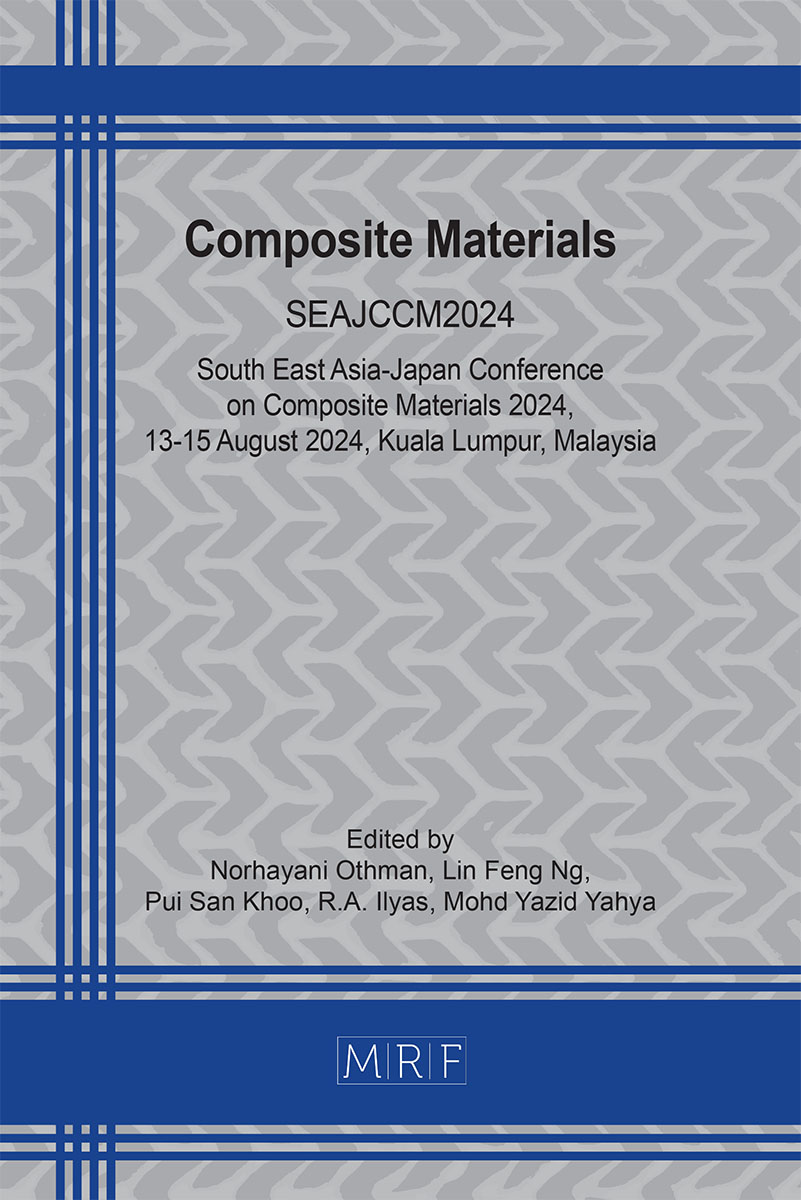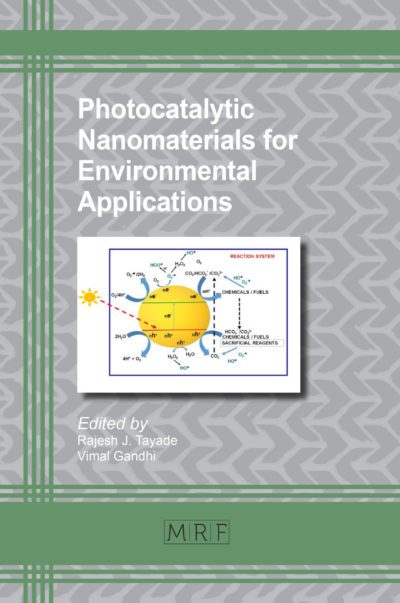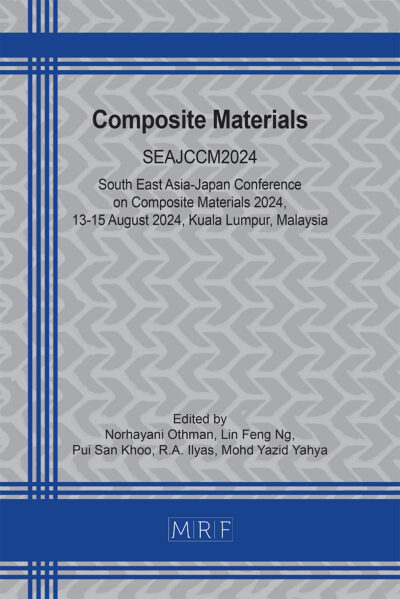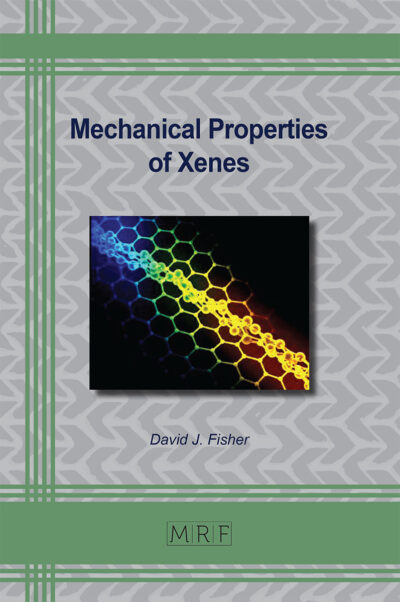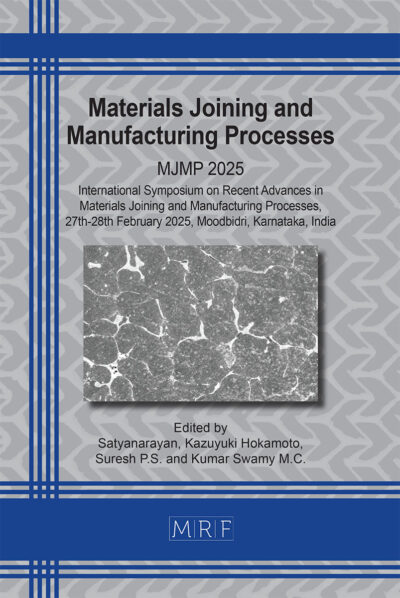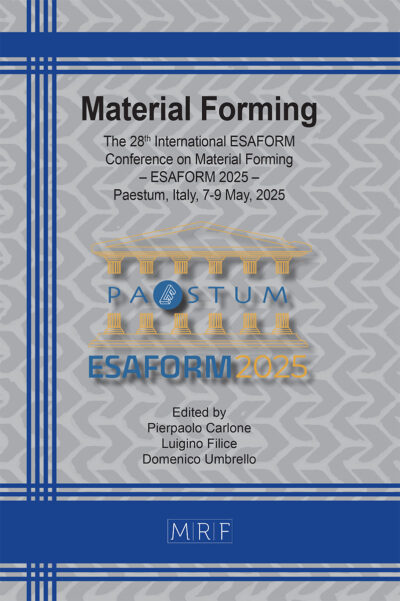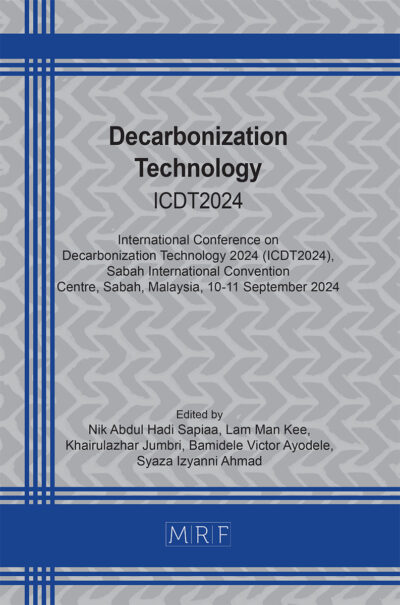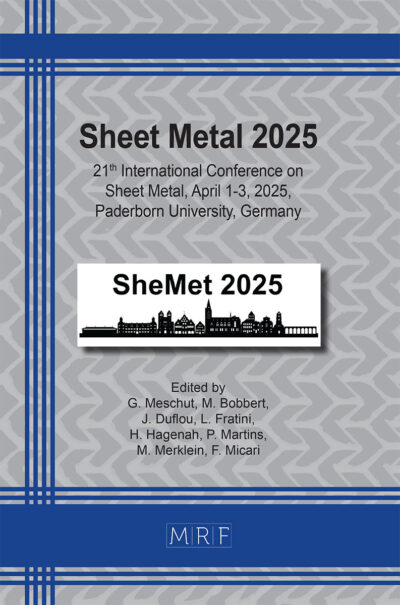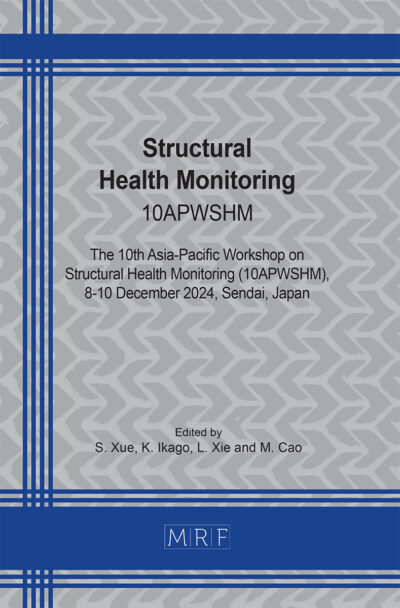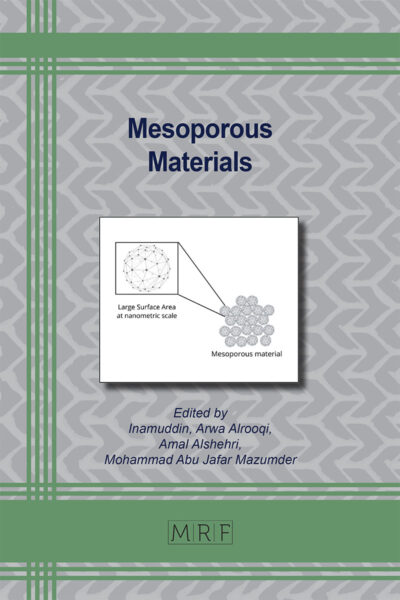Synthesis and Characterization of Modified Nanocellulose-Based Adsorbent for Removal of Cu2+ Ion Metal in Wastewater
Noorhaslin CHE SU, Ain Aqilah BASIRUN, Nor Shahroon HAMEED SULTAN, Devagi KANAKARAJU, Cecilia Devi WILFRED
Abstract. The continuous release of heavy metal from various industrial activities has been recognized as one of the major causes contributing to water pollutant. Herein, a novel magnetite adsorbent consisting of nanocellulose (NC), magnetite nanoparticles (MNP) and titanium dioxide (TiO2) have been prepared using hydrothermal method. The adsorbent material with adsorption, magnetic and photocatalytic properties has been successfully synthesized and used for Cu2+ removal from industrial wastewater. The magnetite adsorbent made up of nanocellulose from sago was characterized by X-ray diffraction (XRD), Fourier Transform Infrared Spectroscopy, (FTIR), field emission scanning electron microscope (FESEM) for physicochemical study. XRD demonstrating high crystallinity of nanocellulose and displays well crystallized anatase TiO2. TiO2 embedded on the surface on NC/MNP were clearly observed through FESEM. The photocatalytic efficiency of the adsorbent degradation of Cu was evaluated using atomic adsorption spectroscopy (AAS). The NC/MNP showed removal of 54.1% of Cu2+ metal. Increase of TiO2 loading (800µl) facilitate Cu removal up to 96% after 120 minutes exposure under ultraviolet irradiation. Kinetic analysis using the PSO model at 100mg/L of Cu2+ gave a value of equilibrium adsorption capacity, qe of 4.29 mg/g and a value of the pseudo-second-order rate constant, K2 of 0.004 (95% C.I., 0.0037 to 0.012). The result from these studies showed that the combination of nanocellulose, magnetite and TiO2 has potential heavy metal removals.
Keywords
Nanocellulose, Cu (II), Magnetite, TiO2
Published online 2025/06/01, 10 pages
Copyright © 2025 by the author(s)
Published under license by Materials Research Forum LLC., Millersville PA, USA
Citation: Noorhaslin CHE SU, Ain Aqilah BASIRUN, Nor Shahroon HAMEED SULTAN, Devagi KANAKARAJU, Cecilia Devi WILFRED, Synthesis and Characterization of Modified Nanocellulose-Based Adsorbent for Removal of Cu2+ Ion Metal in Wastewater, Materials Research Proceedings, Vol. 56, pp 69-78, 2025
DOI: https://doi.org/10.21741/9781644903636-7
The article was published as article 7 of the book Composite Materials
![]() Content from this work may be used under the terms of the Creative Commons Attribution 3.0 license. Any further distribution of this work must maintain attribution to the author(s) and the title of the work, journal citation and DOI.
Content from this work may be used under the terms of the Creative Commons Attribution 3.0 license. Any further distribution of this work must maintain attribution to the author(s) and the title of the work, journal citation and DOI.
References
[1] Q. Wu, N.F. Tam, J.Y. Leung, X. Zhou, J. Fu, B. Yao, L. Huang, Ecological risk and pollution history of heavy metals in Nansha mangrove, South China, Ecotoxicology and Environmental Safety 104 (2014) 143-151. https://doi. 10.1016/j.ecoenv.2014.02.017
[2] Y. Ahn, B.E. Logan, Effectiveness of domestic wastewater treatment using microbial fuel cells at ambient and mesophilic temperatures, Bioresource Technology 101 (2010) 469-475. https://doi.10.1016/j.biortech.2009.07.039
[3] C.N.C. Hitam, A.A. Jalil, Recent advances on nanocellulose biomaterials for environmental health photoremediation: An overview, Environmental Research 204 (2022) 111964. https://doi.10.1016/j.envres.2021.111964
[4] L.T. Yogarathinam, P.S. Goh, A.F. Ismail, A. Gangasalam, N.A. Ahmad, A.Samavati, S.C. Mamah, M.N.Z. Abidin, N.C. Ng, B. Gopal, Nanocrystalline cellulose incorporated biopolymer tailored polyethersulfone mixed matrix membranes for efficient treatment of produced water, Chemosphere 293 (2022) 133561. https://doi.10.1016/j.chemosphere.2022.133561
[5] F. Asempour, D. Emadzadeh, T. Matsuura, B. Kruczek, Synthesis and characterization of novel Cellulose Nanocrystals-based Thin Film Nanocomposite membranes for reverse osmosis applications, Desalination 439 (2018) 179-187. https://doi. 10.1016/j.desal.2018.04.009
[6] T.K. Das, A. Poater, Review on the use of heavy metal deposits from water treatment waste towards catalytic chemical syntheses, International Journal of Molecular Sciences 22 (2021) 13383. https://doi.0.3390/ijms222413383
[7] G. Lofrano, M. Carotenuto, G. Libralato, R.F. Domingos, A. Markus, L. Dini, R.K. Gautam, D. Baldantoni, M. Rossi, S.K. Sharma, M.C. Chattopadhyaya, M. Giugni, S. Meric, S. Polymer functionalized nanocomposites for metals removal from water and wastewater: an overview, Water Research 92 (2016) 22-37. https://doi.10.1016/j.watres.2016.01.033
[8] M.S. Denny Jr, S.M. Cohen, In situ modification of metal–organic frameworks in mixed‐matrix membranes, Angewandte Chemie International Edition 54 (2015) 9029-9032. https://doi.10.1002/anie.201504077
[9] D. Kanakaraju, Y.C. Lim, A. Pace, Magnetic hybrid TiO2/Alg/FeNPs triads for the efficient removal of methylene blue from water, Sustainable Chemistry and Pharmacy 8 (2018) 50-62. https://doi.10.1016/j.scp.2018.02.001
[10] A. Mautner, Nanocellulose water treatment membranes and filters: a review, Polymer International 69 (2020) 741-751. https://doi.10.1002/pi.5993
[11] J. Chang, Q. Zhang, Y. Liu, Y. Shi, Z. Qin, Preparation of Fe3O4/TiO2 magnetic photocatalyst for photocatalytic degradation of phenol, Journal of Materials Science: Materials in Electronics 29 (2018) 8258-8266. https://doi. 10.1007/s10854-018-8832-7
[12] H.S. Hassan, M.F. Elkady, A.A. Farghali, A.M. Salem, A.I. Abd El-Hamid, Fabrication of novel magnetic zinc oxide cellulose acetate hybrid nano-fiber to be utilized for phenol decontamination, Journal of the Taiwan Institute of Chemical Engineers 78 (2017) 307-316. https://doi.10.1016/j.jtice.2017.06.021
[13] R.L. Narayana, M. Matheswaran, A. Abd Aziz, Saravanan, P. Photocatalytic decolourization of basic green dye by pure and Fe, Co doped TiO2 under daylight illumination, Desalination 269 (2011) 249-253. https://doi.10.1016/j.desal.2010.11.007
[14] Y. Ku, I.L. Jung, Photocatalytic reduction of Cr (VI) in aqueous solutions by UV irradiation with the presence of titanium dioxide, Water Research 35 (2001) 135-142. https://doi.10.1016/S0043-1354(00)00098-1
[15] M.J. López-Muñoz, J. Aguado, A. Arencibia, R. Pascual, Mercury removal from aqueous solutions of HgCl2 by heterogeneous photocatalysis with TiO2, Applied Catalysis B: Environmental 104 (2011) 220-228. https://doi. 10.1016/j.apcatb.2011.03.029
[16] K.M. Joshi, B.N. Patil, D.S. Shirsath, V.S. Shrivastava, Photocatalytic removal of Ni (II) and Cu (II) by using different Semiconducting materials, Advances in Applied Science Research 2 (2011) 445-54.
[17] M.N. Chong, B. Jin, C.W. Chow, C. Saint, Recent developments in photocatalytic water treatment technology: a review, Water Research 44 (2010) 2997-3027. https://doi.10.1016/j.watres.2010.02.039
[18] Q. Sun, H. Li, B. Niu, X. Hu, C. Xu, S. Zheng, Nano-TiO2 immobilized on diatomite: characterization and photocatalytic reactivity for Cu2+ removal from aqueous solution, Procedia Engineering 102 (2015) 1935-1943. https://doi.10.1016/j.proeng.2015.01.334
[19] S. Naduparambath, E. Purushothaman, Sago seed shell: determination of the composition and isolation of microcrystalline cellulose (MCC), Cellulose 23 (2016) 1803-1812. https://doi.10.1007/s10570-016-0904-3
[20] H. Zhang, X. He, W. Zhao, Y. Peng, D. Sun, H. Li, X. Wang, Preparation of Fe3O4/TiO2 magnetic mesoporous composites for photocatalytic degradation of organic pollutants, Water Science and Technology 75 (2017) 1523-1528. https://doi.10.2166/wst.2017.002
[21] S.B. Hammouda, N. Adhoum, L. Monser, Synthesis of magnetic alginate beads based on Fe3O4 nanoparticles for the removal of 3-methylindole from aqueous solution using Fenton process, Journal of Hazardous Materials 294 (2015) 128-136. https://doi.10.1016/j.jhazmat.2015.03.068
[22] N. Amiralian, M. Mustapic, M.S.A. Hossain, C. Wang, M. Konarova, J. Tang, J. Na, A. Khan, A. Rowan, Magnetic nanocellulose: A potential material for removal of dye from water, Journal of Hazardous Materials 394 (2020) 122571. https://doi.10.1016/j.jhazmat.2020.122571
[23] I.J.D. Ebenezar, S. Ramalingam, C.R. Raja, P.J. Prabakar, Vibrational spectroscopic [IR and raman] analysis and computational investigation [NMR, UV-Visible, MEP and kubo gap] on L-Valinium picrate, J. Nanotechnol. Adv. Mater 2 (2014) 11-25. https://doi.10.12785/jnam/020102
[24] V. Gopalakannan, N. Viswanathan, One pot synthesis of metal ion anchored alginate–gelatin binary biocomposite for efficient Cr (VI) removal, International Journal of Biological Macromolecules 83 (2016) 450-459. https://doi.10.1016/j.ijbiomac.2015.10.010
[25] A.K. Veeramachineni, T. Sathasivam, S. Muniyandy, P. Janarthanan, S.J. Langford, L.Y. Yan, Optimizing extraction of cellulose and synthesizing pharmaceutical grade carboxymethyl sago cellulose from Malaysian sago pulp, Applied Sciences 6 (2016) 170. https://doi.10.3390/app6060170
[26] N. Yacob, M.R. Yusof, Z.M.A. Ainun, K.H. Badri, Effect of cellulose fiber from sago waste on properties of starch-based films, In IOP Conference Series: Materials Science and Engineering 368 (2018) 012028. https://doi.10.1088/1757-899X/368/1/012028
[27] N.A. Rosli, I. Ahmad, I. Abdullah, Isolation and Characterization of Cellulose Nanocrystals from Agave angustifolia Fibre, Bioresources 8 (2013) 1893-1908
[28] H. Kargarzadeh, I. Ahmad, I. Abdullah, A. Dufresne, S. Y. Zainudin, R.M. Sheltami, Effects of hydrolysis conditions on the morphology, crystallinity, and thermal stability of cellulose nanocrystals extracted from kenaf bast fibers, Cellulose 19 (2012) 855-866. https://doi.10.1007/s10570-012-9684-6
[29] M.A. Al-Ghouti, D.A. Da’ana, Guidelines for the use and interpretation of adsorption isotherm models: A review, Journal of Hazardous Materials 393 (2020) 122383. https://doi.10.1016/j.jhazmat.2020.122383\
[30] S. Das, V.V. Goud, Characterization of a low-cost adsorbent derived from agro-waste for ranitidine removal, Materials Science for Energy Technologies 3 (2020) 879-888. https://doi.10.1016/j.mset.2020.10.009
[31] A. Rahman, T. Urabe, N. Kishimoto, Color removal of reactive procion dyes by clay adsorbents, Procedia Environmental Sciences 17 (2013) 270-278. https://doi.10.1016/j.proenv.2013.02.038
[32] X. Sun, X. Lv, C. Han., L. Bai, T. Wang, Y, Sun, Fabrication of Polyethyleneimine-Modified Nanocellulose/Magnetic Bentonite Composite as a Functional Biosorbent for Efficient Removal of Cu(II), Water 4 (2022) 2656. https://doi.10.3390/w14172656
[33] M. Kaur, S. Kumari, P. Sharma, Removal of Pb (II) from aqueous solution using nanoadsorbent of Oryza sativa husk: Isotherm, kinetic and thermodynamic studies, Biotechnology Reports 25 (2020) e00410. https://doi. 10.1016/j.btre. 2019.e00410
[34] Z. Ji, Y. Zhang, H. Wang, C. Li, Research progress in the removal of heavy metals by modified chitosan, Tenside Surfactants Detergents (2022) 2414. https://doi.10.1515/tsd-2021-2414
[35] G. Blanchard, M. Maunaye, G. Martin, Removal of heavy metals from waters by means of natural zeolites, Water research 18 (1984) 1501-1507. https://doi.10.1016/0043-1354(84)90124-6
[36] S. Azizian, Kinetic models of sorption: a theoretical analysis. Journal of colloid and Interface Science 276 (2004) 47-52. https://doi.10.1016/j.jcis.2004.03.048

